Gratitude could be defined as recognizing and appreciating the “good” things in our lives, regardless of challenges that come up. Gratitude is a positive emotion that aligns with a growth mindset. Practicing this emotion can benefit our sense of well-being by reminding us of the strengths, resources, and support systems in our lives. These positive aspects of our day-to-day empower us and remind us of many gifts we have. Positive thinking and gratitude can lead to an increased sense of self-efficacy and resiliency against setbacks. In other words, positive thinking leads to positive results.
Don’t Focus on the “Bad”
Focusing on the negative aspects of the day can be an avoidable trap. Life constantly evolves with new challenges and often distracts us from the things that make us happy. If we aren’t mindful of our thought habits, we may follow a pattern of negative thinking. Negative thinking and self-criticism build up over time and can detract fromthe overall sense of happiness and fulfillment. Negativity may affect performance, may diminish morale, and may contribute long-term to the progression of disorders such as anxiety and depression. Focusing on the “bad” can decrease our perception of happiness and ultimately lead to a more fixed mindset. Appreciating the better things in life steers our thoughts and emotions towards progression and growth, rather than fixating on the negative aspects. In 1998, Martin Seligman, former president of the American Psychological Association, started the discussion on positive psychology, which has evolved over the years. The P.E.R.M.A. model of well-being was later developed from his original theories. P.E.R.M.A is an acronym for positive emotions, engagement, relationships, meaning, and achievement. This theory of positive psychology states that by acknowledging these positive aspects in our lives, we feed a deeper sense of intrinsic well-being.
Why is it important to practice gratitude?
 Feeling gratitude, or practicing it intentionally, can benefit our sense of happiness because we train our thoughts to entertain aspects of P.E.R.M.A. These thoughts serve our own greater good and connect us back to relationships, meaning, and life purpose. These thoughts are focused on things we value, regardless of the circumstances we are in.
Feeling gratitude, or practicing it intentionally, can benefit our sense of happiness because we train our thoughts to entertain aspects of P.E.R.M.A. These thoughts serve our own greater good and connect us back to relationships, meaning, and life purpose. These thoughts are focused on things we value, regardless of the circumstances we are in.
New challenges are approached with optimism as we make positive thinking habitual. Positive emotions, in a way, “strengthen” our mind by reinforcing our sense of contentment in ourselves and our surroundings. The practice of intentional positive thinking builds up mental resiliency to new challenges. Resiliency leads to approaching problems as a relative event, rather than an innate issue.
Gratitude can be a choice to acknowledge what is going well and move past the things that detract from our happiness. Gradually, positive thinking fosters a positive outlook when problem-solving, while we are actively engaged with day-to-day life.
How Gratitude can change a Fixed Mindset toward a Growth Mindset
Fixed-minded people often make the mistake of treating problems as failures or things to avoid. Growth-minded people are resilient because they treat problems as a process of ongoing development. By adopting a growth mindset, we can meet our challenges with an appreciation for where we are and embrace challenges as an anticipated part of the process. People who feel gratitude tend to be happier as they understand that life may be challenging at times, but offers many gifts to cherish.
Make Gratitude a Habit
You can start practicing gratitude in many ways by taking mindful moments throughout the day. One idea is to explore yoga, the inward journey, which was created to be a physical means of introspection and mindfulness. Try this… Before your next yoga session, try setting intentions on gratitude before your asana practice. Joining the Level 1 Yoga Class at NIFS, for example, could be a time to slow down and think about one or two things that provide meaning and happiness in your life. After 45 minutes, you may be surprised by how your thoughts are naturally more optimistic. The troubles from the day suddenly seem not so bad.
 Ready to bring more mindfulness and gratitude into your day? Join NIFS Mindful November! Follow along on our social media or stop by the service desk to discover this month’s weekly prompts and participating fitness classes as part of our Mindful Challenge.
Ready to bring more mindfulness and gratitude into your day? Join NIFS Mindful November! Follow along on our social media or stop by the service desk to discover this month’s weekly prompts and participating fitness classes as part of our Mindful Challenge.


 As we get into the season of gratitude, it’s the perfect time to think about how we can strengthen our bodies and minds. This November, we’re super excited to kick off the holiday season with a Planksgiving Challenge! Whether you’re a fitness pro or just starting out, planks are a fantastic way to build your core strength, improve posture, and up your overall fitness game.
As we get into the season of gratitude, it’s the perfect time to think about how we can strengthen our bodies and minds. This November, we’re super excited to kick off the holiday season with a Planksgiving Challenge! Whether you’re a fitness pro or just starting out, planks are a fantastic way to build your core strength, improve posture, and up your overall fitness game.
 Looking to build strength that lasts a lifetime? Squats are a foundational movement that supports health, mobility, and longevity, yet many of us overlook this natural exercise due to our modern, sedentary lifestyles. Incorporating squats into your routine can help you stay strong, flexible, and resilient as you age.
Looking to build strength that lasts a lifetime? Squats are a foundational movement that supports health, mobility, and longevity, yet many of us overlook this natural exercise due to our modern, sedentary lifestyles. Incorporating squats into your routine can help you stay strong, flexible, and resilient as you age.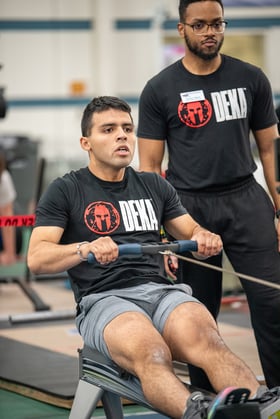
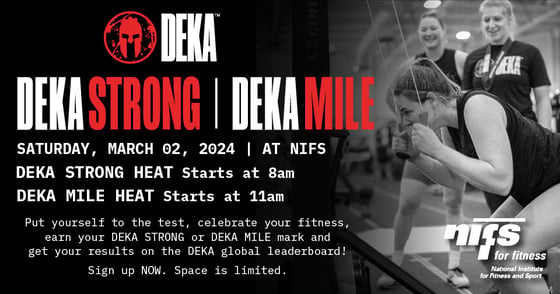
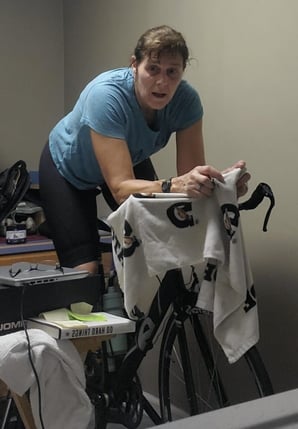 How I Did It
How I Did It
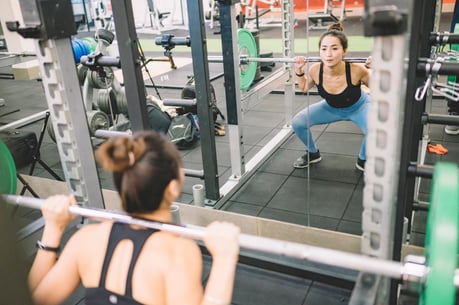 Fall is hands-down one of my favorite times of the year. There’s a crispness in the air, the leaves begin to change, there’s pumpkin-flavored everything, football season is in full swing, and there’s the return of a little phenomenon known as
Fall is hands-down one of my favorite times of the year. There’s a crispness in the air, the leaves begin to change, there’s pumpkin-flavored everything, football season is in full swing, and there’s the return of a little phenomenon known as 
 It’s time to get serious about goal setting. Setting goals can help you dig more deeply into fitness and think about what you truly want to accomplish. Goals can range from wanting to walk 1 mile to squatting 2 times your body weight, and absolutely everything in between and beyond. Everyone is on a different path to fitness, so whatever your goals may be is completely up to you.
It’s time to get serious about goal setting. Setting goals can help you dig more deeply into fitness and think about what you truly want to accomplish. Goals can range from wanting to walk 1 mile to squatting 2 times your body weight, and absolutely everything in between and beyond. Everyone is on a different path to fitness, so whatever your goals may be is completely up to you.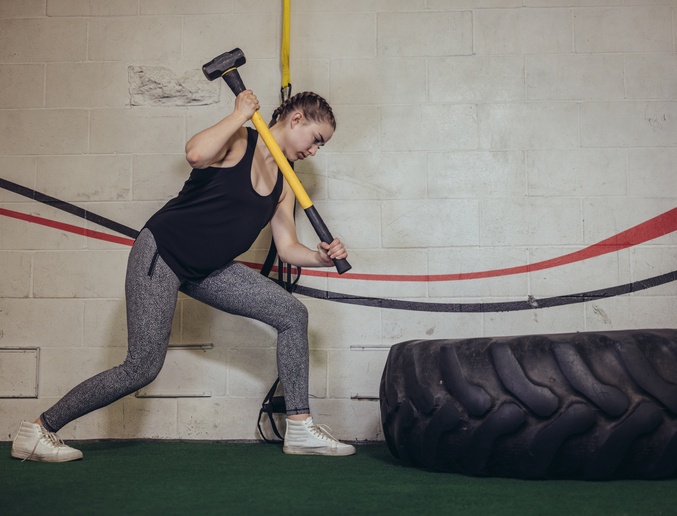 Greetings NIFS friends! Hopefully your New Year’s resolutions are keeping you more active at the gym and less active at the buffet line. All joking aside, getting back to the gym can be challenging, especially if you are not sure what to do when you get there or if you are burnt out on cookie-cutter workouts that are barely working anymore. With that being said, introducing new equipment, ideas, and strategies can be a daunting task. Don’t let that get you down, though, because we are here to rescue your workout!
Greetings NIFS friends! Hopefully your New Year’s resolutions are keeping you more active at the gym and less active at the buffet line. All joking aside, getting back to the gym can be challenging, especially if you are not sure what to do when you get there or if you are burnt out on cookie-cutter workouts that are barely working anymore. With that being said, introducing new equipment, ideas, and strategies can be a daunting task. Don’t let that get you down, though, because we are here to rescue your workout! It’s that time of year when millions of people around the world start looking for that next “best” thing to give them the body they have always dreamed of. Aggressive physical challenges, cleanses, elaborate diets that usually involve the removal of a food source (and result in you craving it even more); people will take some drastic steps to help erase the past year of poor nutrition and lifestyle decisions.
It’s that time of year when millions of people around the world start looking for that next “best” thing to give them the body they have always dreamed of. Aggressive physical challenges, cleanses, elaborate diets that usually involve the removal of a food source (and result in you craving it even more); people will take some drastic steps to help erase the past year of poor nutrition and lifestyle decisions.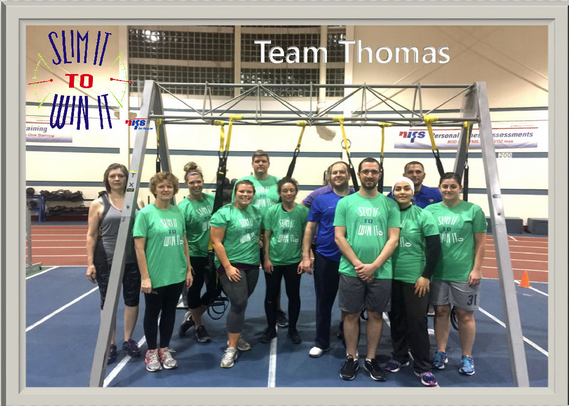 Not Too Easy to Quit
Not Too Easy to Quit
 The Group Fitness Class of the Month is BODYATTACK. When reading that name, what first comes to mind? For me, I immediately think, “Okay, slightly intimidating, but I’m intrigued. This better be good.” As a former dancer, avid runner, and group fitness instructor of multiple formats, I’d like to consider myself as having relatively good cardiovascular endurance and overall bodyweight strength. Well, let me tell you, friends, this class is no joke! Hang on now—before any of you new exercisers click away to look for an easier class, let me assure you, you too can participate! I will tell you how, but let me first give you a little background.
The Group Fitness Class of the Month is BODYATTACK. When reading that name, what first comes to mind? For me, I immediately think, “Okay, slightly intimidating, but I’m intrigued. This better be good.” As a former dancer, avid runner, and group fitness instructor of multiple formats, I’d like to consider myself as having relatively good cardiovascular endurance and overall bodyweight strength. Well, let me tell you, friends, this class is no joke! Hang on now—before any of you new exercisers click away to look for an easier class, let me assure you, you too can participate! I will tell you how, but let me first give you a little background.